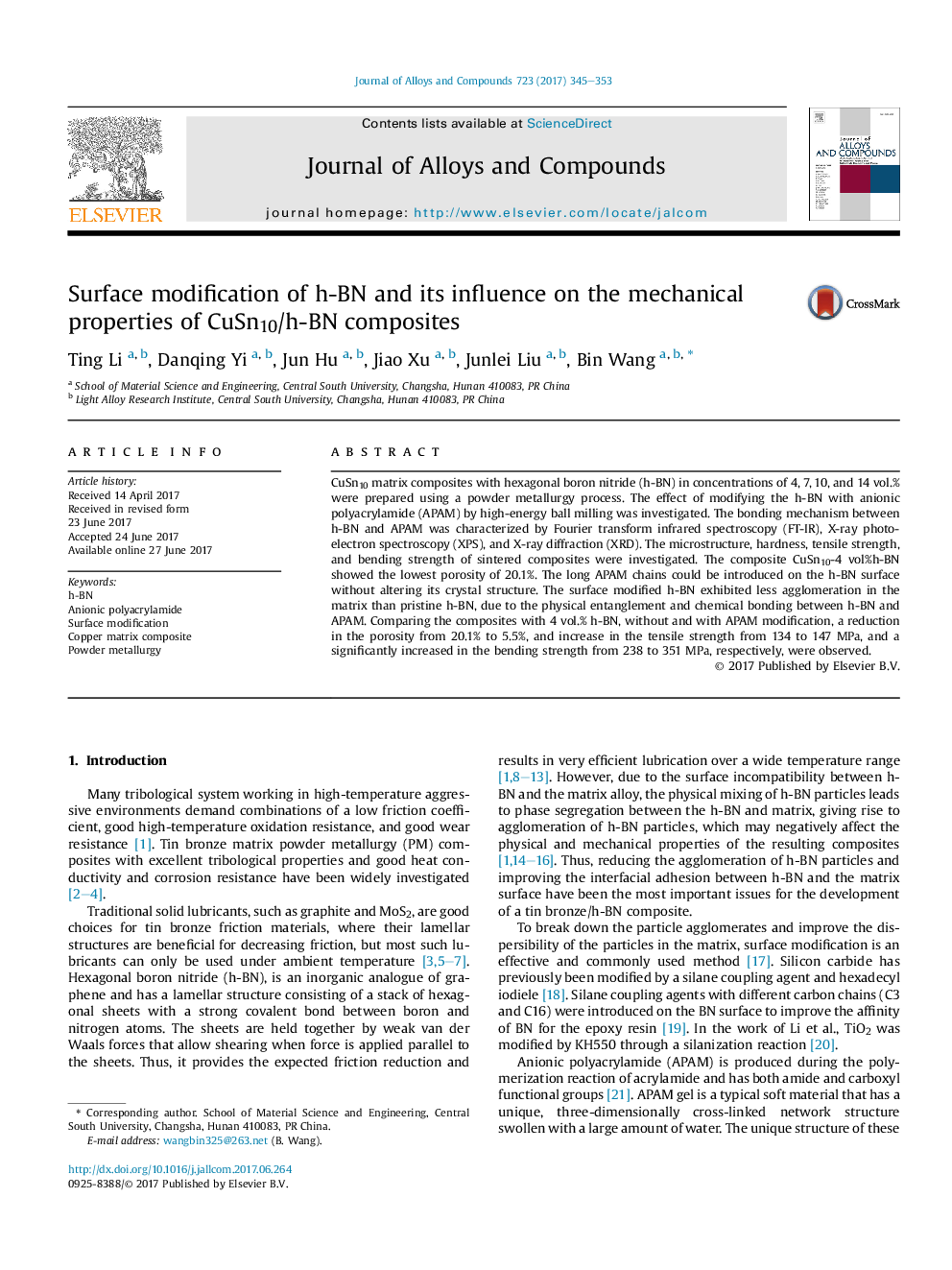| Article ID | Journal | Published Year | Pages | File Type |
|---|---|---|---|---|
| 5458714 | Journal of Alloys and Compounds | 2017 | 9 Pages |
Abstract
CuSn10 matrix composites with hexagonal boron nitride (h-BN) in concentrations of 4, 7, 10, and 14Â vol.% were prepared using a powder metallurgy process. The effect of modifying the h-BN with anionic polyacrylamide (APAM) by high-energy ball milling was investigated. The bonding mechanism between h-BN and APAM was characterized by Fourier transform infrared spectroscopy (FT-IR), X-ray photoelectron spectroscopy (XPS), and X-ray diffraction (XRD). The microstructure, hardness, tensile strength, and bending strength of sintered composites were investigated. The composite CuSn10-4Â vol%h-BN showed the lowest porosity of 20.1%. The long APAM chains could be introduced on the h-BN surface without altering its crystal structure. The surface modified h-BN exhibited less agglomeration in the matrix than pristine h-BN, due to the physical entanglement and chemical bonding between h-BN and APAM. Comparing the composites with 4Â vol.% h-BN, without and with APAM modification, a reduction in the porosity from 20.1% to 5.5%, and increase in the tensile strength from 134 to 147Â MPa, and a significantly increased in the bending strength from 238 to 351Â MPa, respectively, were observed.
Related Topics
Physical Sciences and Engineering
Materials Science
Metals and Alloys
Authors
Ting Li, Danqing Yi, Jun Hu, Jiao Xu, Junlei Liu, Bin Wang,
